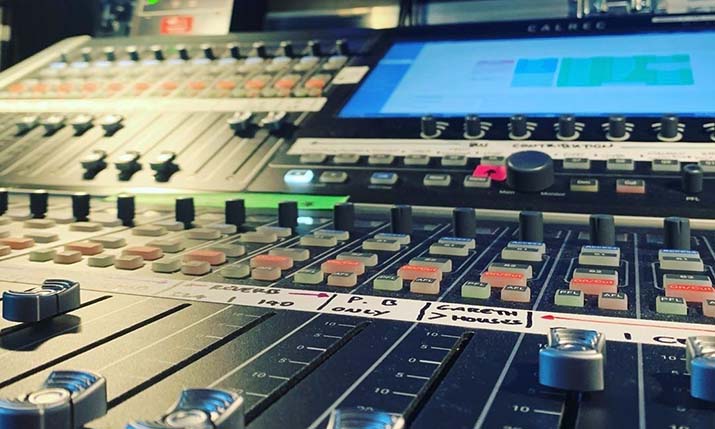Perfect combination: Calrec argues that combined production is the future of live sports broadcasting
 By Dave Letson, VP of sales, Calrec
By Dave Letson, VP of sales, Calrec
This might be controversial, but here goes: The future of live sports broadcasting will not be on-site, or off-site, or hybrid, or edge processing. In fact, it will be determined entirely by production needs and budget, and it won’t be up to us to decide how it’s done.
As an industry, we’ve spent the last two years assessing and re-assessing established broadcast audio workflows, as well as inventing new ones. Necessity is a powerful driver, and our industry has driven the available technology to its limits. We’ve talked ourselves hoarse about accelerated workflows and technological progress, and it’s been well documented how remote working and remote production have been normalised.
Think about how the majority of large sporting events have been covered in 2021… This year’s coverage in Tokyo was mixed in a variety of ways; a mix of physical consoles on-site and on-site remote production cores which enabled people to work on a transmission mix in an entirely different country on the other side of the world. Some broadcasters didn’t send any equipment at all, choosing instead to add local commentary to international feeds in their own facilities.
To the viewer this was seamless, but broadcasters made huge cost savings on personnel, shipping and travel.
Proven technology
While 12 months ago we marvelled at how broadcasters had risen to the challenges of how to cover sports in such a restricted environment, today these are everyday workflows. The technology is proven, it’s reliable and the complexities of latency on comms and remote control over WAN have been largely managed. Plus, as more broadcasters have embraced these flexible workflows, more live programmes are also being mixed remotely with virtualised surfaces.
The landscape has already changed. The industry’s continued uptake of IP has armed broadcasters with the freedom to be increasingly flexible. Combined with the ability to geographically distribute production of live events, broadcasters now have the confidence to experiment with different ways of working.
It has led to the untethering of the industry from the constraints of the technology. Which brings me back to the future of live sports broadcasting.
Given that live sports broadcasting has been able to embrace multiple ways of working, it no longer relies on the same workflows. Decisions can be made based not on what equipment is available but rather on what the production needs. eSports has already done the early running for this – companies like Riot Games have been working in such an unconstrained manner for years – but we are at a massive changeover point for mainstream sports.
Cutting the apron strings
Many of our customers are already working with remote operation centres (ROCs), where DSP and control can be uncoupled and I/O can be fed to DSP either direct or via WAN. This allows the production to choose where talent, equipment and production staff are located.
This arrangement can reduce the number of people on-site – the truck DSP can be utilised for in-ear monitoring for on-site talent while the event is mixed at the studio, and the desk settings can be mirrored to provide a fully redundant surface just in case connectivity goes down.
But we have been working with even more flexible workflows. For example, we’ve been working with a client on a hybrid network that can flex with the demands of the production. It’s not on-prem, on-site or remote production. It’s combined production.
This fully IP network consists of onsite DSP and DSP at a remote facility in another location. The control surface can be either on-site or at a remote facility. The remote facility can also connect to any number of venues to mix live programmes; this makes the most of the install, reduces travel, reduces shipping, makes the best use of local personnel and provides an acoustically treated environment to maintain a quality output. In this respect, it is not dissimilar to an ROC.
The perfect combination
But this set up also allows the broadcaster to flex where necessary. The production may choose to use the remote facility to provide the mixing environment. If the remote facility is being used, or the event is more niche, the onsite facilities can be utilised. If the event is bigger – let’s say there are pre and post-game performances – both sets of facilities can be employed with separate engineering teams. They can be done on a physical surface or using a GUI controller on the public internet.
This is a real-life combination of on-site and remote working, edge processing and remote production, and the workflow is entirely defined by the requirements of the individual production – not the technology.
Distance is less of an issue as technology has allowed broadcasters to manage it, and cost savings are the norm; this means these are no longer drivers. The drivers are now about flexing the tech to make a better product and maxing out the in-use time of broadcasters’ investment.
Combined production models are the future, and they will be defined not by the equipment but by the production. If there’s a legacy of the COVID pandemic on live sport, it’s that.
